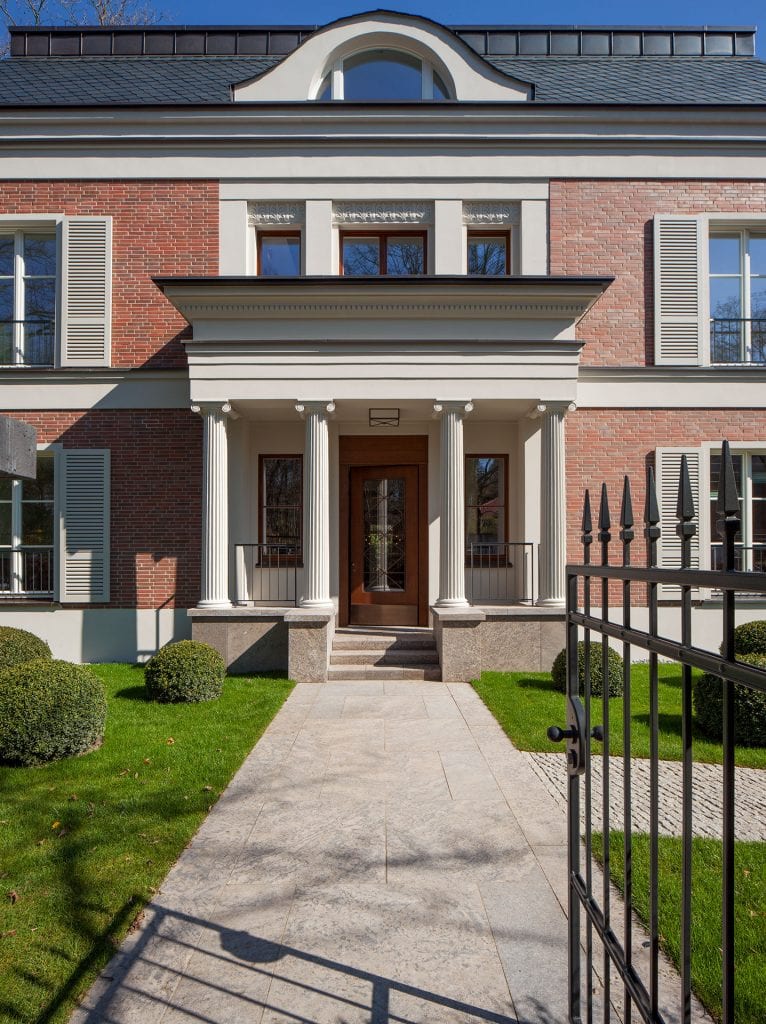Multifaceted Beauties
Our sight lines usually go from outside to the inside—first we see the outer shell, then follows the core within. So it goes with buildings too.
The first impression, the first vibe happens when your eyes initially sweep across the facade. Rough or smooth—cool or warm colors—chunky in its structure or streamlined—with hard edges or rounded off—is all of it, ultimately, just stone? No, far from it; in fact, it’s much more than that—facade composition is the much more fitting term.
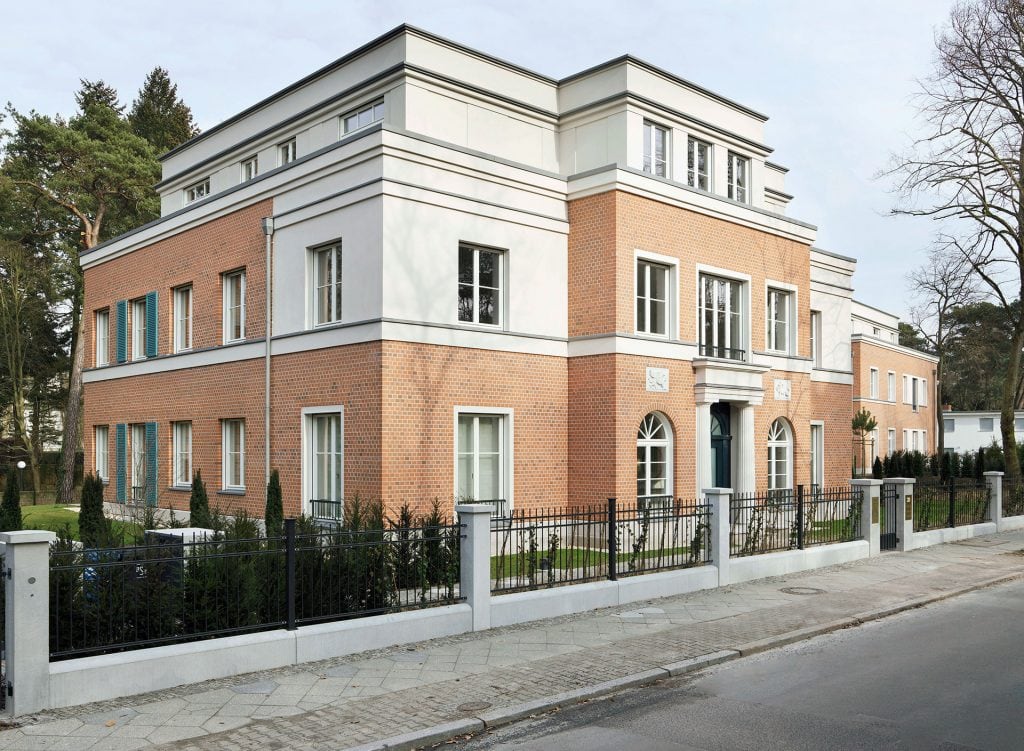
Town Houses at the Leo-Blech-Platz
Our ensemble of town houses on Berlin’s Leo-Blech-Platz sport light-colored facades. Sand-colored plaster subtly underlines the clinker facade which, depending on the time of day, shimmers in different tones of curry, saffron and amber.
A facade is the face of the house—it invites you in, ennobles the street, ideally fits in perfectly with its surroundings, as well as bringing character to the neighborhood. At the RALF SCHMITZ firm, we conceive our projects with this approach, and therefore often end up defaulting to traditional brick facades.
Brick facades full of character, painstakingly detailed and elegantly designed, are an integral part of many of the more than 2,000 RALF SCHMITZ buildings the company has produced during its long history.
For a good reason, too: brick has been used for houses by contractors and project developers for millennia. It’s solid in its production, versatile in its use and lasts for a long time.
Brick is timelessly beautiful, ennobling and most importantly, of an extremely stable value. The variety of colors, shapes and surface textures make it a classic with wide versatility.
Nevertheless, its components are always the same: it has either loam or clay at its core. The interplay of these elements with water makes the material supple, which allows it to be pressed into the desired shape and size, and then fired.
Voilà: one of the most beautiful natural building materials appears in a new light.
“Architecture starts when you carefully put two bricks together. There it begins.”
Ludwig Mies van der Rohe
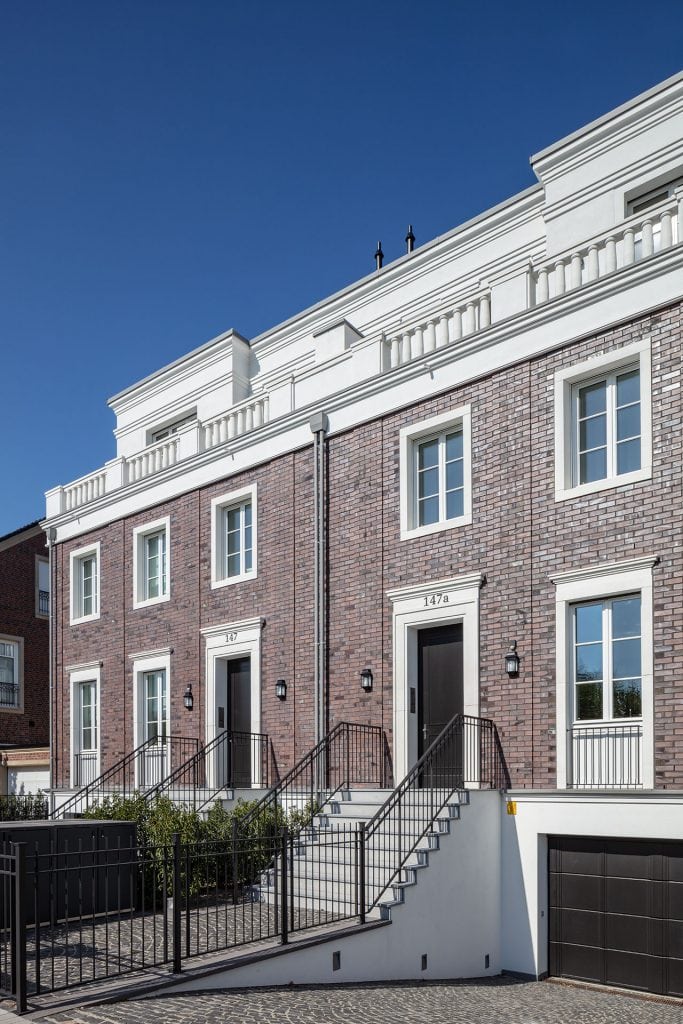

Evidence of this axiom is can be seen in these examples of our facade design which always combines, at its core, the rules of construction with timelessly sustainable architecture.
Haus von Heinsberg
The facade of our charming corner development, Haus von Heinsberg, in Düsseldorf is perfectly structured. The urban villa in a country house style is cloaked in unique red clinker bricks which give the house its regionally typical flair.
Rubensstraße
A classic brick cloak from Wittmunder: the hand-chosen unique pieces that decorate the facade of the town houses on Rubensstraße in Düsseldorf’s Zooviertel give the villas a Belgian feel. Fired at 1,200 Celsius and endlessly durable, the bricks are produced by a East Friesian company that has been making bricks with regional clay for over 100 years.
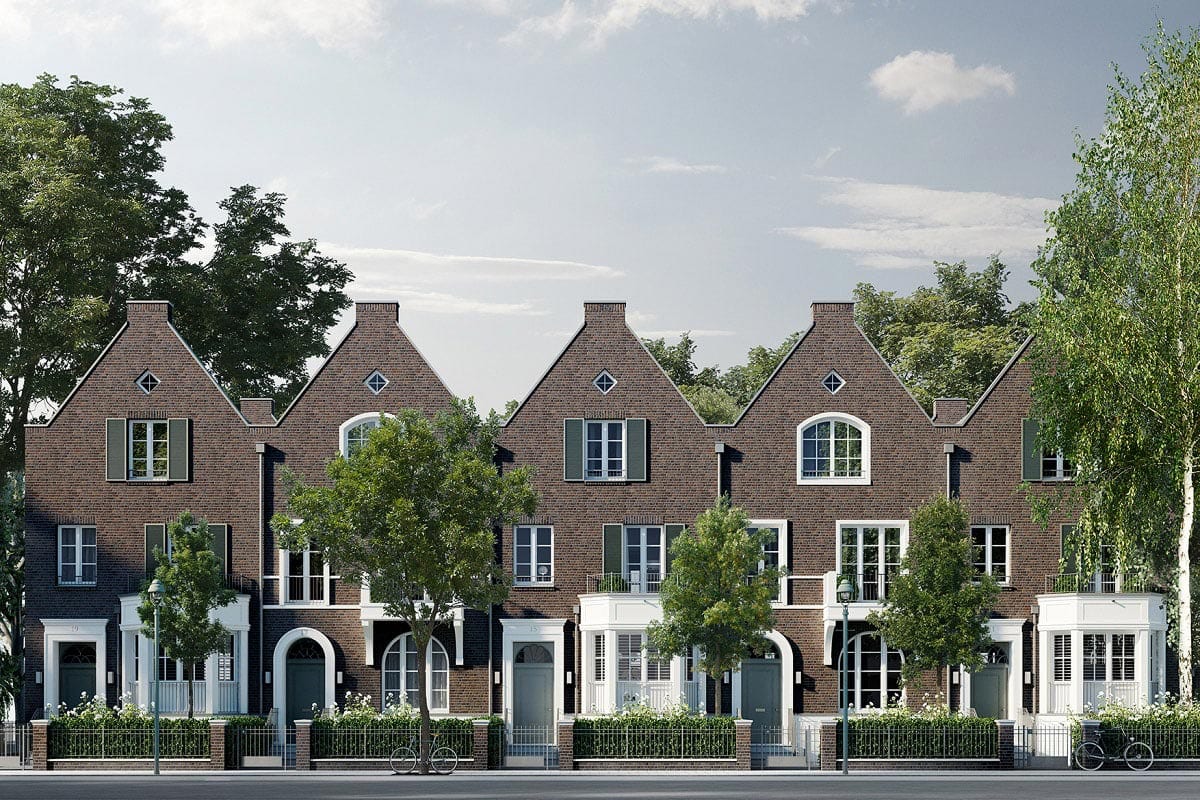
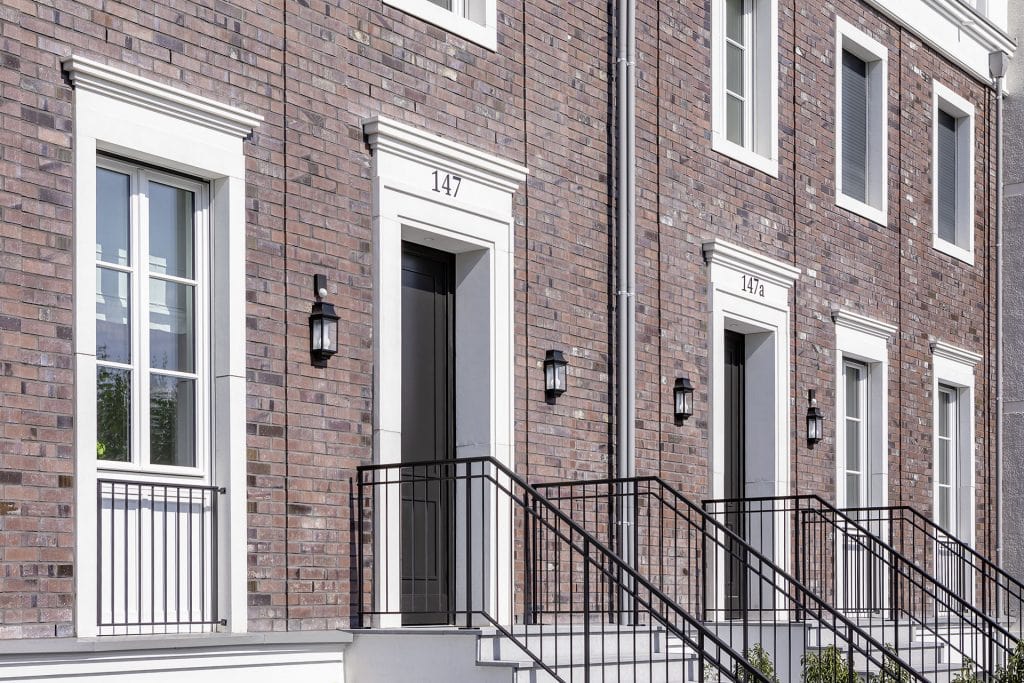
Rheinallee
The restrained beauty of the facade of the townhouses on Rheinallee in the most beautiful part of Düsseldorf is classic and aesthetically pleasing. The gentle contrast between the warmth of the dark brick and the lighter cornices give the buildings their charming style. Emblematic of RALF SCHMITZ’s valuable building quality.
Haus Weyhe
In the middle of an old orchard, surrounded by a large private garden, this stand-alone villa was made with virtuosic craftsmanship that is rarely seen in these kinds of buildings. The delicate, glowing red brick facade magically attracts the gaze.
